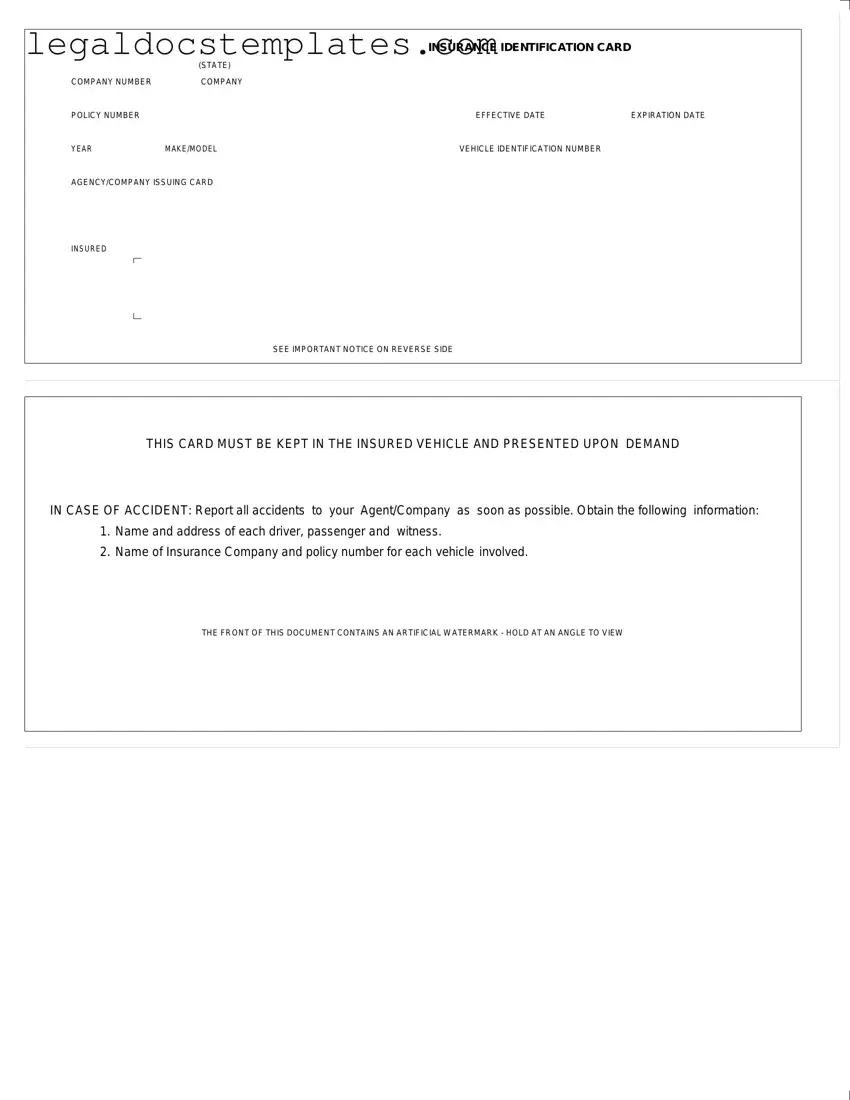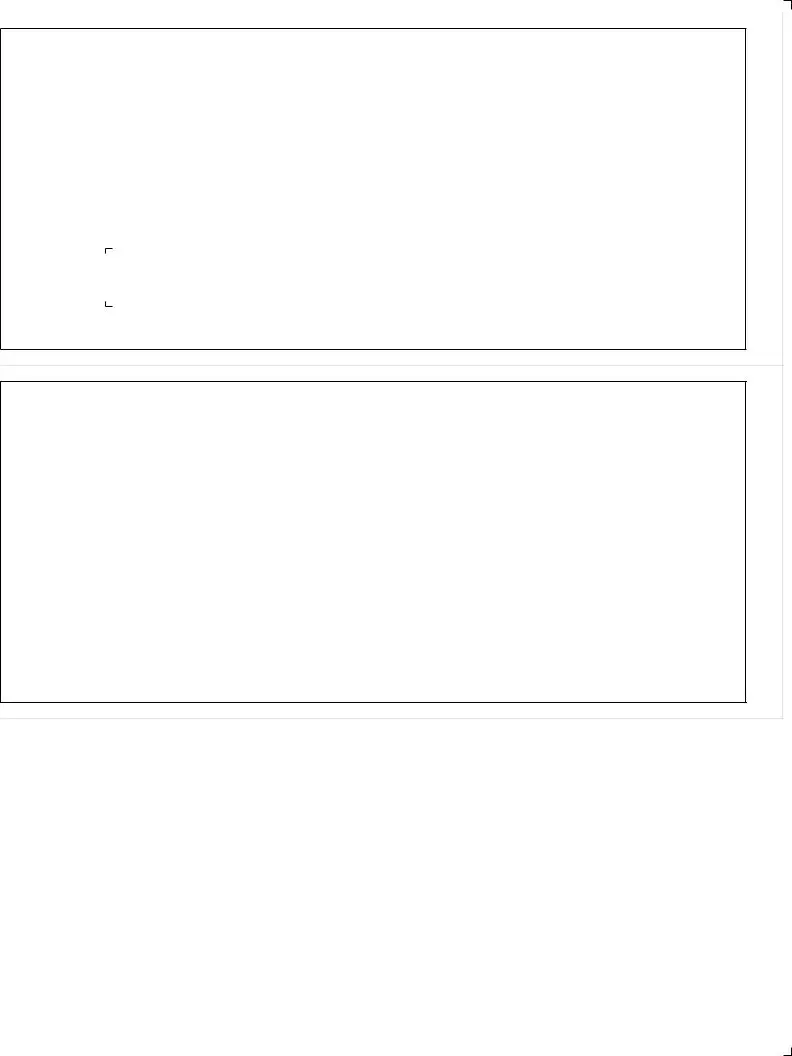The Proof of Health Insurance document is quite similar to the Auto Insurance Card. Both serve as physical evidence of an insurance policy's existence, listing important details such as the policy number and effective dates. However, instead of vehicle information, the health insurance proof typically includes the insured's name and possibly their health plan type or coverage details.
A Vehicle Registration document bears resemblance to the Auto Insurance Card in the context of vehicle documentation. It details the make and model of the vehicle, its identification number (VIN), and the dates of registration validity. While the insurance card deals with the financial protection aspect, the registration connects the vehicle to its owner in the state's records.
A Home Insurance Policy Declaration page shares similarities with the Auto Insurance Card as well. It summarizes the key details of the insurance coverage but for a property instead of a vehicle. This would typically include the policy number, effective and expiration dates, and information regarding the insured property, much like the vehicle details on the auto insurance card.
The Warranty Card for automotive parts or vehicles can be compared to the Auto Insurance Card, too. While it primarily provides information about the warranty period and coverage for parts or services, it also includes identification details similar to those relating to warranty under the insurance card, albeit for different purposes.
A Driver's License, although primarily an identification document, shares a connection with the Auto Insurance Card through its association with vehicle operation. Both are essential for drivers, with the license validating the driver’s ability and the insurance card proving financial protection against accidents.
The Roadside Assistance Card is another document related to vehicles that has some parallels with the Auto Insurance Card. It provides crucial information such as the membership number and contact details for assistance, similar to how an insurance card offers policy details for financial aid in emergencies.
An International Motor Insurance Card (Green Card) matches the Auto Insurance Card in its role as proof of insurance across international borders. It contains the vehicle's and insurer's information crucial for international travel, much like the domestic insurance card’s function within one's home country.
A Credit Card Information Card, provided with new credit cards, somewhat mirrors the Auto Insurance Card. It outlines account details and the card's effective period, paralleling how insurance cards include policy information and validity dates.
The Pet Insurance Identification Card is akin to the Auto Insurance Card, tailored for pet owners. It offers a summary of the insurance coverage, including the policy number and the coverage period for the pet, analogous to how auto insurance secures vehicles.
Last, the Membership Card for Auto Clubs or Associations also shares characteristics with the Auto Insurance Card. It includes member identification details and validity dates, similar to insurance cards that provide proof of policy and coverage dates, both essential for specific benefits and services offered to vehicle owners.

